News
Industry Interplay in Food Packaging
4 Nov 2014Sterilization, opening mechanisms, packaging for longer life, speed, hygiene, cost-effectiveness, reducing waste, ease of use…. packaging for solid product, for liquid product, for viscous product….into cups, bottles, trays…..packaging for market appeal, for ease of transport and storage….sustainability throughout the supply chain. All these things form part of today’s increasingly complex packaging mix. And because consumer […]

Sterilization, opening mechanisms, packaging for longer life, speed, hygiene, cost-effectiveness, reducing waste, ease of use…. packaging for solid product, for liquid product, for viscous product….into cups, bottles, trays…..packaging for market appeal, for ease of transport and storage….sustainability throughout the supply chain. All these things form part of today’s increasingly complex packaging mix. And because consumer preferences change, there is also an increasing demand for dynamism, to anticipate and respond to growing demands for convenience, efficiency, portability and, not least, novelty and differentiation. But many of these factors do not figure in the end consumer’s mind. In the so-called developed world, they are ‘givens’. And so they should be.
So what does today’s consumer care about? Here are a couple of issues:
Individuality and fashion
Let’s face it, food shopping is boring. Most packaging is boring. The drinks sector, a highly competitive market, has responded to the challenge of making product stand out with innovations such as limited edition bottles that offer uniqueness with eye-catching motifs and shapes. And the most innovative designs show a commensurate degree of success. But what about the food and beverage industry as a whole? How can packaging and fashion come together to create a pleasurable consumer experience?
Convenience and size
Larger packs may appear cheaper, but if you end up throwing most of the food away, it is a false economy. How big is your freezer? The latest report from WRAP, an organisation set up in 2000, estimates that UK households are still throwing away 4.2 million tonnes of household food and drink annually. That equates to six meals per household per week. More efficient packaging is one way to reduce food waste, and the SAVEFOOD initiative aims to create a dialogue between industry, research, politics and civil society to tackle the problem of spoilage, but we need to go further.
The problems for industry
Innovations and uniqueness cost money; and to remain competitive, packaging companies have to continually invest in a myriad of changing systems and processes to balance the delicate interplay of research and development versus cost and marketability. For example, any packaging company must deploy hi-tech IT systems. Au fait with cloud computing? If not, forget it. The challenge here is to find an inexpensive way of producing the right product in a timely fashion, taking into account all the factors listed above, while introducing innovative ideas that will appeal to the consumer. How to go about it?
Learning from others
We are increasingly moving away from the silo mentality where industry was frightened of dialogue lest it should reveal some trade secret that would compromise its competitive advantage. Now we have to go further. The packaging industry is already talking to other players within the food and beverage industry, to government, to associations and to consumers. The only way forward now is to widen the circle. What, for example, could the food packaging industry learn from fashion designers? Could Victoria Beckham give a few tips on the marketability of product? Sound crazy? Hmm. But you get my drift. There is no point in ‘reinventing the wheel’; let’s recognise the fact that all industries have common goals, and start to share more non-competitive information with each other. Let’s understand what other stakeholders in other industries have achieved, and learn to leverage its applicability to our own.
Related news
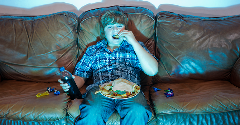
UK to ban junk food TV advertisements before 9pm
3 Oct 2024
In a bid to reduce childhood obesity, the UK government has introduced a policy, coming into effect on 1 October 2025, banning junk food advertising on television before the 9pm watershed.
Read more
Which food and beverage brands made TIME’s Most Influential Companies list?
2 Oct 2024
Chickpea pasta, prebiotic sodas, food boxes, non-alcoholic beer, and a soil carbon marketplace are the specialties of the five food and beverage brands that earned a spot on TIME’s 2024 list.
Read more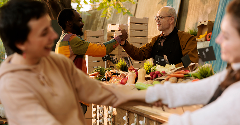
New environmental food scoring standards emerge
30 Sep 2024
EIT Food and Foundation Earth collaborate to launch environmental food scoring for products entering the global supply chain.
Read more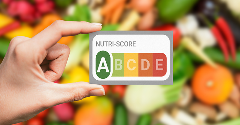
Danone removes NutriScore from products
20 Sep 2024
Following an algorithm update that gives some of its sweetened drinks a worse score, Danone has removed the front-of-pack label, NutriScore, from all of its products – putting profit before public health, say campaigners.
Read more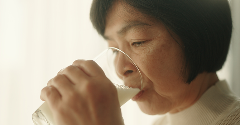
Nestlé develops a new fat reduction method for dairy ingredients
26 Aug 2024
A Brazil-based Nestlé research and development team has developed a way to reduce the fat in milk powder by as much as 60%, without impacting the key characteristics that consumers enjoy.
Read more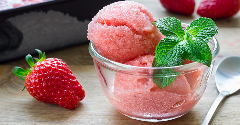
Better Juice expands its range to sorbets
16 Aug 2024
Food tech startup Better Juice has developed a technology to reduce the sugar content in fruit sorbets. The process retains the natural vitamins, minerals, and flavours of fruit, while offering manufacturers an easy-to-implement and scalable solution t...
Read more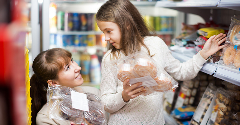
German study reveals high sugar, fat, and salt levels in children's foods
13 Aug 2024
The food industry is making slow progress in reducing the high levels of sugar, fat, and salt in German food and beverage products marketed to children, according to the Max Rubner Institute (MRI).
Read more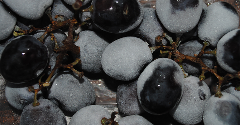
Swedish court overturns prohibition on winery’s use of imported frozen grapes
12 Aug 2024
Swedish company Drood Winery has successfully challenged the Swedish Food Agency’s decision to prohibit the production and sale of their product made from frozen grapes imported from Iran.
Read more
Paris Olympics: Food and beverage brands champion health, fun, and sustainability
5 Aug 2024
Food and beverage brands are aligning with the Paris Olympics 2024 Food Vision, which emphasises sustainability, local sourcing, and plant-based diets.
Read more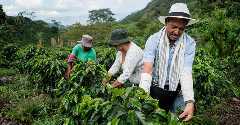
The coffee supply chain is failing farmers, says Solidaridad
30 Jul 2024
The coffee industry’s economic model means its profits do not reach farmers, despite there being enough value to be shared all along the supply chain, according to a new report by Solidaridad Network and IDH.
Read more